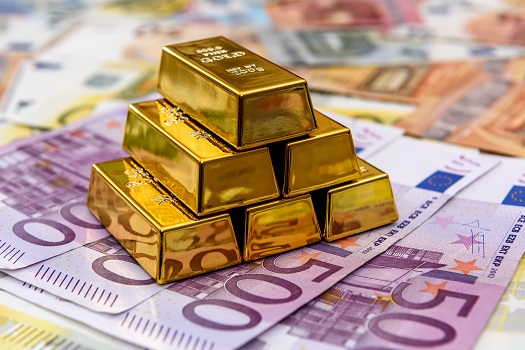5 Errors to Avoid Making with Bullion
Bullion can be a safe and reliable investment, but it’s not quite as foolproof as some people assume. Though a mistake probably won’t wipe out all your savings, it can still result in some sizable losses. There are a few common mistakes new investors make when they first start working with bullion. The professionals from First National Bullion and Coin, San Diego gold and bullion dealers with years of experience collectors can rely on, explain how being aware of these potential mistakes can help you avoid making them yourself.
1. Mixing Up Physical Assets & Exchange-Traded Funds
A big mistake people make is not properly researching bullion before they get into investing. It can be very easy to mix up actual physical metal with an exchange-traded fund (ETF). An ETF is essentially a type of promissory note that means you own a certain amount of shares in a bullion supply. ETFs aren’t traded universally, and calculating the actual value of the shares can be a little different.
2. Only Thinking about Short-Term Investments
In almost all cases, bullion performs better as a long-term investment. Don’t get into bullion investing with the assumption you can make a quick buck in a few months and then withdraw your investment. You’re better off planning on leaving your money in the bullion for quite a while. Giving your strategy some time to work is more likely to result in a positive return.
3. Falling for Scams
Bullion is a high-value item, so there are all sorts of scams surrounding it. A common scam is charging investors for secure storage that doesn’t exist. Others include selling bullion the seller doesn’t actually have the right to sell and tricking people into thinking older bullion is somehow more valuable. It’s always important to do your research. Try to only deal with authenticated trading organizations, and check dealers’ reputations before purchasing. Always remember that if something is too good to be true, it probably is.
4. Buying Bullion Only when Values Rise
This is a classic investment mistake many bullion investors fall prey to. When bullion values rise, many investors try to rush in and get bullion because they think the prices will keep going up. However, bullion is a fairly stable investment, so buying when prices are decreasing can also be a good strategy. Generally, the best time to buy bullion is when processes are lower.
5. Paying Extra for Rare Coins
Some unethical dealers may try to push customers into buying rare coins as an investment. However, it’s important to realize that in some cases, the only value of these is as collectibles. Collectible value is very unstable. Something you paid a lot of money for may lose value overnight. You’re better off investing in bullion itself, since the value of bullion remains so steady.
Whether you’re a veteran precious metals collector or you’re interested in buying bullion for investment purposes, you’ll find a fantastic variety of high-quality precious metals at First National Bullion. San Diego residents who are looking to work with only the most reputable precious metals experts should give us a call at 858-666-6570 to speak with one of our knowledgeable representatives.
The statements made in this blog are opinions, and past performance is not indicative of future returns. Precious metals, like all investments, carry risk. Precious metals and coins may appreciate, depreciate, or stay the same in cash value depending on a variety of factors. First National Bullion does not guarantee, and its website and employees make no representation, that any metals for sale will appreciate sufficiently to earn the customers a profit. The decision to buy, sell, or borrow precious metals and which precious metals to purchase, borrow, or sell are made at the customer’s sole discretion.


